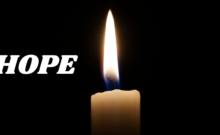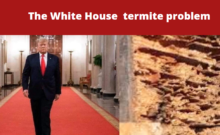Nevada – is synonymous with entertainment. We all know Las Vegas as “Sin City,” and the public relations side of the city wishes to project it is okay to act outside your moral bounds when in Las Vegas as “What happens in Vegas, stays in Vegas,” while the Reno-Tahoe has started saying, “Reno Tahoe USA … Far from expected.” Well they both are right, and so so very wrong.
Nevada, is infamous as the only state in the United States which has legalized prostitution, and thus when one hears of prostitution and Las Vegas, its far too often a ho-hum affair. Not a good mix, by any measure when it comes to the prospects for our children. You see, there is one other distinction enjoyed by Nevada, it is one of the primary destinations within the United States for trafficked and sexually exploited children. With the knowledge that the average age at the beginning of the exploitation is 12 years of age, we need to be concerned and we need to pay attention, regardless of where we reside.
Sadly, there is a dearth of information available from normal media outlets on the situation in Nevada. This is a phenomena I wasn’t expecting. It is my sense there is a large virtual carpet under which the media wishes to slide this issue, perhaps with the mistaken belief that similar to a cockroach infested house, if no light is on, no cockroaches will be seen and they can continue to live under the carpet and in the dark corners of the house. Well, let’s turn the lights on right now.
Shared Hope International, with funding from the US Department of Justice completed a study of the Domestic Minor Sex Trafficking in the Las Vegas area. Their findings included:
- Las Vegas, Nevada is a major destination for domestic trafficked children in the United States. In May 2007 alone, over 400 prostituted children were identified on the streets of Las Vegas. In the 22 month period Aug 2005-May 2007, 226 domestically trafficked minors (DTM) cases were adjudicated. These children were trafficked into Las Vegas from 28 different home states.
- Las Vegas lacks public awareness and prevention programs for youth. Las Vegas is a high risk environment: easy access to alcohol, drugs and 24/7 gaming amidst a “hyper-sexualized” entertainment industry. Prevention programs in community and school environments were found to be non-existent.
- Prostituted children are identified as DTM, but treated as delinquents. Most professionals in Las Vegas interacting with DTMs are capable of identifying domestic minor sex trafficking victims. Despite this understanding, prostituted children are still arrested and placed in detention for an average 17 days before adjudication. One of the primary reasons for this placement is a lack of alternative secure shelter facilities.
- Prosecution of traffickers is strong but should be increased. In the period 1996-2007 the Las Vegas Police Department recorded over 400 pimps suspected of pandering juveniles. No stats are available, however for the prosecution of these individuals. In the period 1994-2007, 1483 female and 13 male juveniles were identified as being involved in prostitution related offenses.
- Traffickers/pimps are familiar with the court system and use it to their advantage. DTM’s are key to the prosecution of pimps. If they fail to appear or testify, the pimp is not successfully prosecuted. In some cases the witness is held in detention longer than their pimps, as prosecutors believe the witness may flee.
- Prosecution of buyers of commercial sex from minors is not a priority. Even though an average of 5-15 men per night may purchase the services of a girl arrested for prostitution or prostitution related offenses, little to no prosecution of the buyer – the John – is occurring.
- DTMs receive harsher penalties than other minors arrested for misdemeanors. For all age groups, the disposition of juvenile proceedings for DTMs and detention are out of proportion when compared to other minors charged with misdemeanors. DTMs charged with prostitution are frequently detained, although it is a misdemeanor. In the first half of 2007, 12.8% of the females sent to Caliente, the state detention facility, were adjudicated for prostitution, a misdemeanor.
- There is a critical lack of safe and appropriate services and programs. Separation of the DTM from the trafficker/pimp is a vital and recognized first step in removing his psychological control over the victim. However, in providing restoration to the victim, immediate issues like food, clothing and secure, safe shelter are important, in addition to medical care, psychological and trauma counseling. Additionally, education and access to life-skills classes are a continuum of services that must be considered as mandatory in an effort to holistically reduce the vulnerability of the DTM to revictimization. Within CCJDC (the county detention facility) and Caliente (the state detention facility), there is a critical lack of programs and services provided to DTMs. Due to the short time that the DTMs are in CCDJC awaiting their hearing, few if any services besides food and shelter are provided.
- Outlined funding and services are only available for foreign national trafficking victims. Although domestic minor sex trafficking victims should have access to numerous state services as a victim population, their label as juvenile delinquents confuses the identifi cation and availability of services for this population. Currently in Las Vegas, the only services and funding outlined to trafficking victims is for international victims through ATLAS – the Las Vegas Human Trafficking Task Force.
The Shared Hope International assessments are so important in shining the light on the situation in the United States – they need our assistance if they are to continue to provide us such insightful data. I urge you to read the complete report and decide for yourself as to the importance of their mission.
They aren’t alone in the conduct of research and awareness, according to the Nevada Child Seekers, over 8000 children go missing each year in the state. We know that a child on the street is a vulnerable individual. How many of us know a 12 year old child? As I mentioned, 12 years of age is the average age that the commercial exploitation of a child occurs, and the dependency both physical and emotional on the individual who is trafficking that child continues for years. How many of these 8000 children will be in the care of the pimp/trafficker?
Resources and community efforts:
Stop Child Trafficking Now held a walk to bring awareness to the issue in September 2009.
Anti-Trafficking League Against Slavery (ATLAS) Task Force is active within the state and focused on the complete rehabilitation cycle. According to their website, the mission of ATLAS is to identify, rescue and restore victims of human trafficking and to prosecute traffickers in the State of Nevada. ATLAS is more completely described on the website of Dr. Alexis Kennedy, a stalwart in the fight to bring our children off the street and back into society, and the pimps (traffickers) off the streets, prosecuted and behind bars.
Destiny House. Destiny House is a safe-house for women transitioning from the lifestyle of commercial sexual exploitation linked to prostitution/pimping. Destiny House is sponsored by The Church at South Las Vegas and Hookers for Jesus.
The Nevada State Assembly has not been idle. In a bill sponsored by Assemblymen, Hambrick, Anderson, Carpenter, Dondero Loop, Horne, Manendo, Ohrehschll and Parnell, Nevada has targeted the assets of those who engage in the child trafficking. Specifically, going after the assets of the pimps/traffickers. Especially noteworthy is the $100,000 fine for those who are found guilty of prostituting children between the ages of 14-18 and $500,000 for those found guilty when the child is younger than 14. The Executive Director of the Polaris Project commented, “We commend Nevada legislators, advocates, and Governor Gibbons for addressing this critical need. We look forward to Nevada authorities — in concert with non-governmental organizations — taking even greater steps next year to end human trafficking of both minors and adults, by implementing greater penalties against traffickers and improving protections for victims.”
Nevada, has created a dichotomy in character if ever there was one. My hat is off to the many citizens of Nevada who are standing up and saying, we don’t need this in our state, and our children deserve our attention.
Thank you for your time.
All the best,
Christopher
If you wish to report a case of trafficking of children (or any other person) call the National Human Trafficking Resource Center at 1-888-3737-888. This national center is maintained by the good folks at the “Polaris Project” and they advise this same number may be used “to connect with anti-trafficking services in your area; or to request training and technical assistance, general information, or specific anti-trafficking resources.“
Prior pieces in this contiuing series on Human Trafficking of our children in the United States:
Children as a Commodity (December 2, 2009)
Children and Texas (Sex Trafficking) (December 9, 2009)
Children in the Southeastern US (Florida, Georgia & Alabama) (January 11, 2010)
Shared Hope International: Las Vegas Assessment (pdf 167 pages)
Nevada Child Seekers: Mission Statement
Stop Child Trafficking Now: Las Vegas Walk
Dr. Alexis Kennedy: Her comprehensive website
Hookers for Jesus: Destiny House
The Church at South Las Vegas: Destiny House
Nevada Assembly Bill 380: copy of the original bill
Polaris Project: Mark Logan’s statement re Nevada Assembly Bill 380


